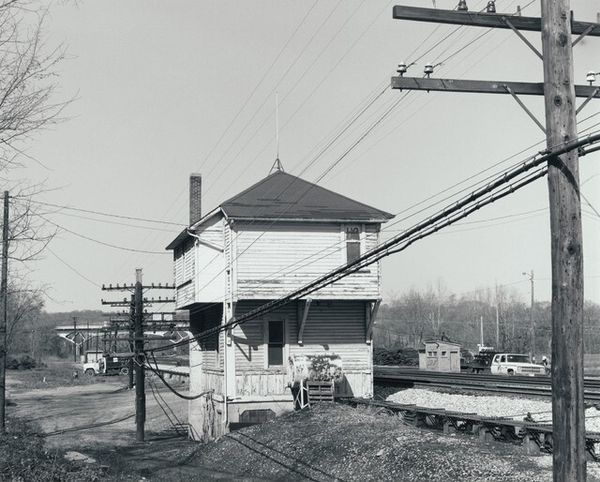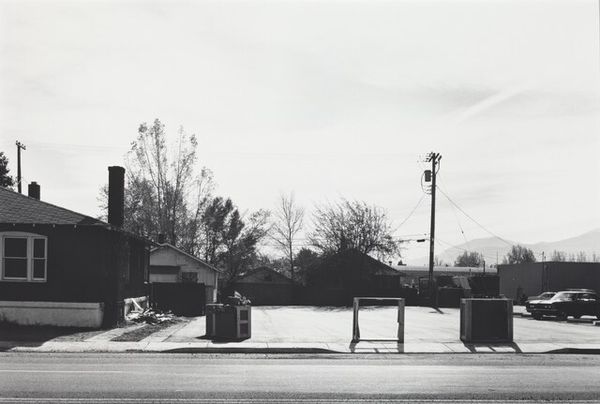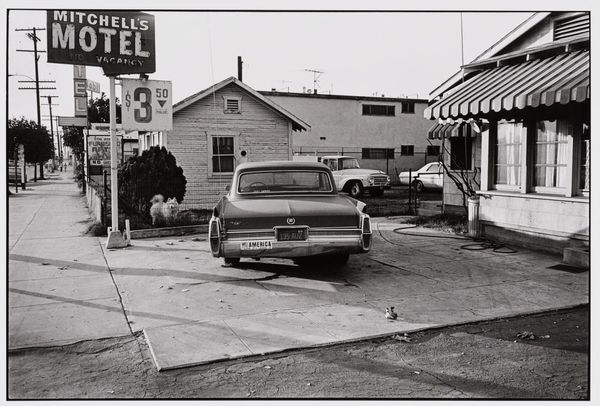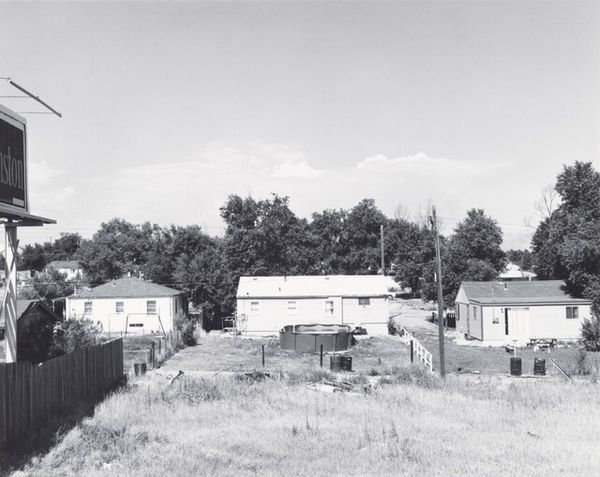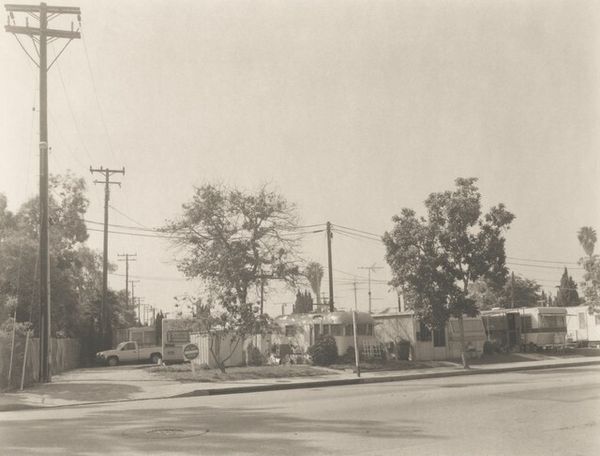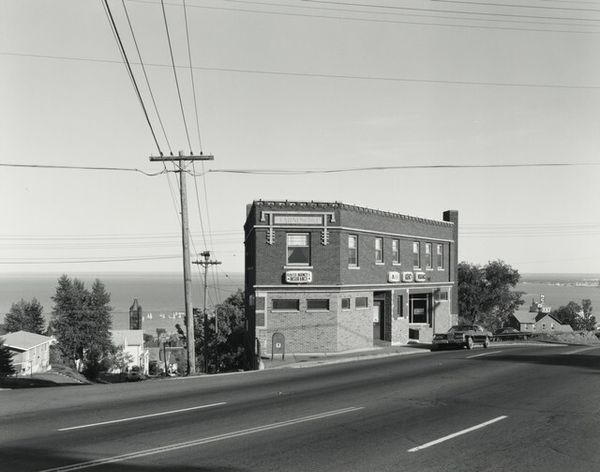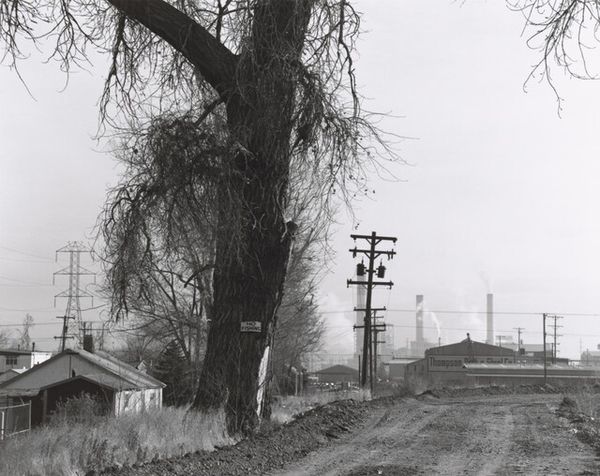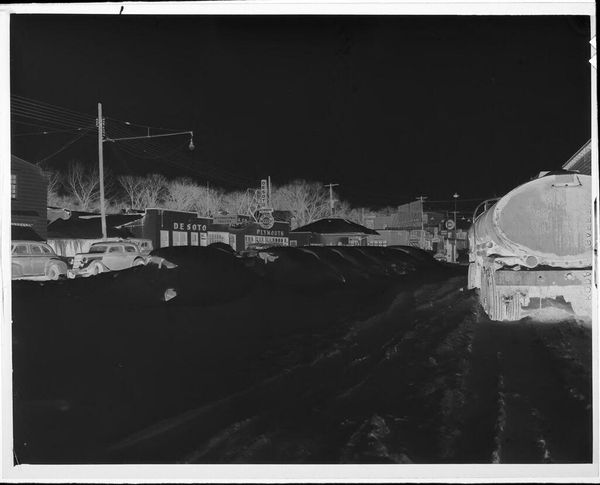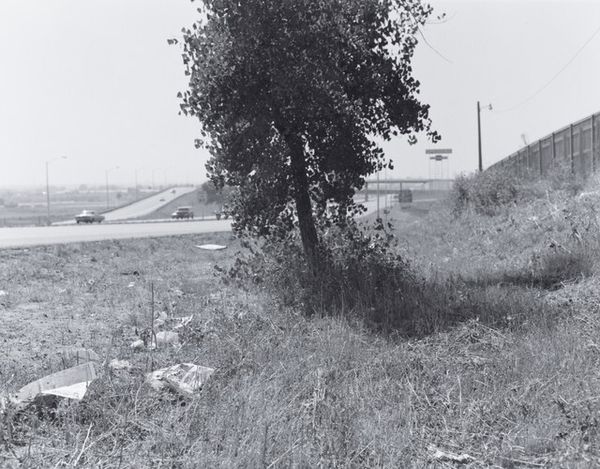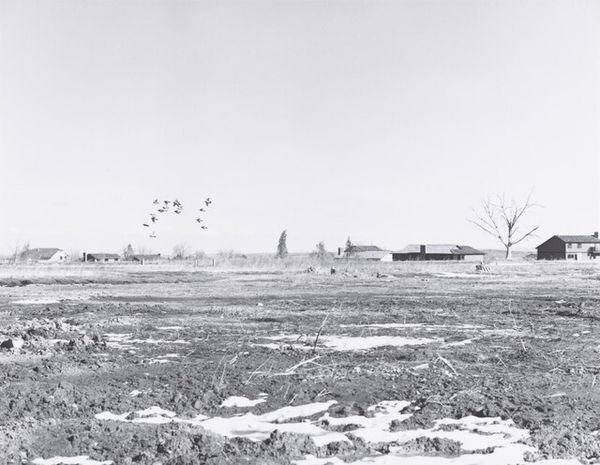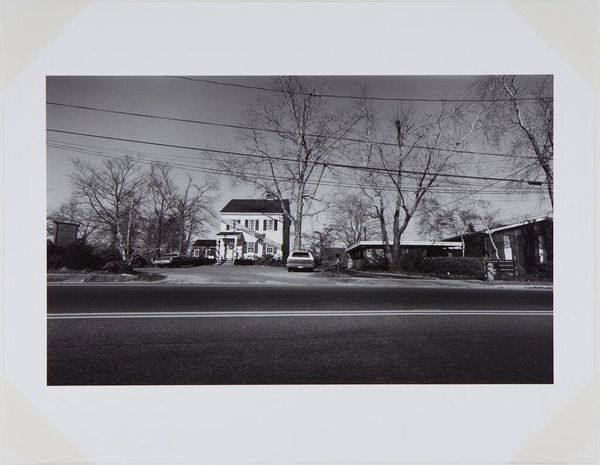
Dimensions: image: 15.24 × 22.86 cm (6 × 9 in.) sheet: 20.32 × 25.4 cm (8 × 10 in.)
Copyright: National Gallery of Art: CC0 1.0
Curator: Lewis Baltz's "Maryland #15," taken in 1976, offers us a stark, monochrome perspective on the American landscape. Editor: Wow, it's bleakly beautiful, isn't it? All that overgrown foliage dominating the foreground, obscuring what I guess is supposed to be a commercial strip. Makes me feel...isolated, somehow. Curator: Precisely. Baltz's photographs often dissect the built environment, examining its impact on the natural world. Notice how the rigid geometry of the buildings is softened by the unruly vegetation, a tension that reflects a postmodern anxiety about progress and development. Editor: It’s like nature is staging a slow-motion takeover! I’m particularly drawn to the utility pole almost dead center in the composition. It's a visual anchor but also kind of pathetic, stranded amidst this urban decay. Curator: The monochrome palette serves to heighten this sense of alienation. Stripped of color, we're left with the stark realities of form, texture, and composition. Semiotically, Baltz uses the landscape as a signifier for the socio-economic landscape of the era. Editor: So it's not *just* a picture of some shops; it’s about...what? The unfulfilled promise of suburbia? The collision of commerce and nature? I love how ambiguous it is! Is it condemning, or simply observing? Curator: It's an objective recording, seemingly devoid of emotional judgment. That detached approach is characteristic of his style. The photograph functions as a document of a specific time and place, prompting reflection on the values we assign to landscape and progress. Editor: For me, it also captures this sense of impermanence. These shops look as though they are just biding time. Makes you think of all the forgotten places we leave behind. I suppose that's why it feels strangely…melancholy? Curator: An astute observation. In its minimalist way, "Maryland #15" achieves significant resonance by allowing viewers to supply the missing narrative. Editor: It definitely haunts you, doesn't it? Leaves you wondering what happened *before* the shot, and what's going to happen next... Curator: Indeed. Its enduring strength lies in its quiet power to invite contemplation and further inspection.
Comments
No comments
Be the first to comment and join the conversation on the ultimate creative platform.
